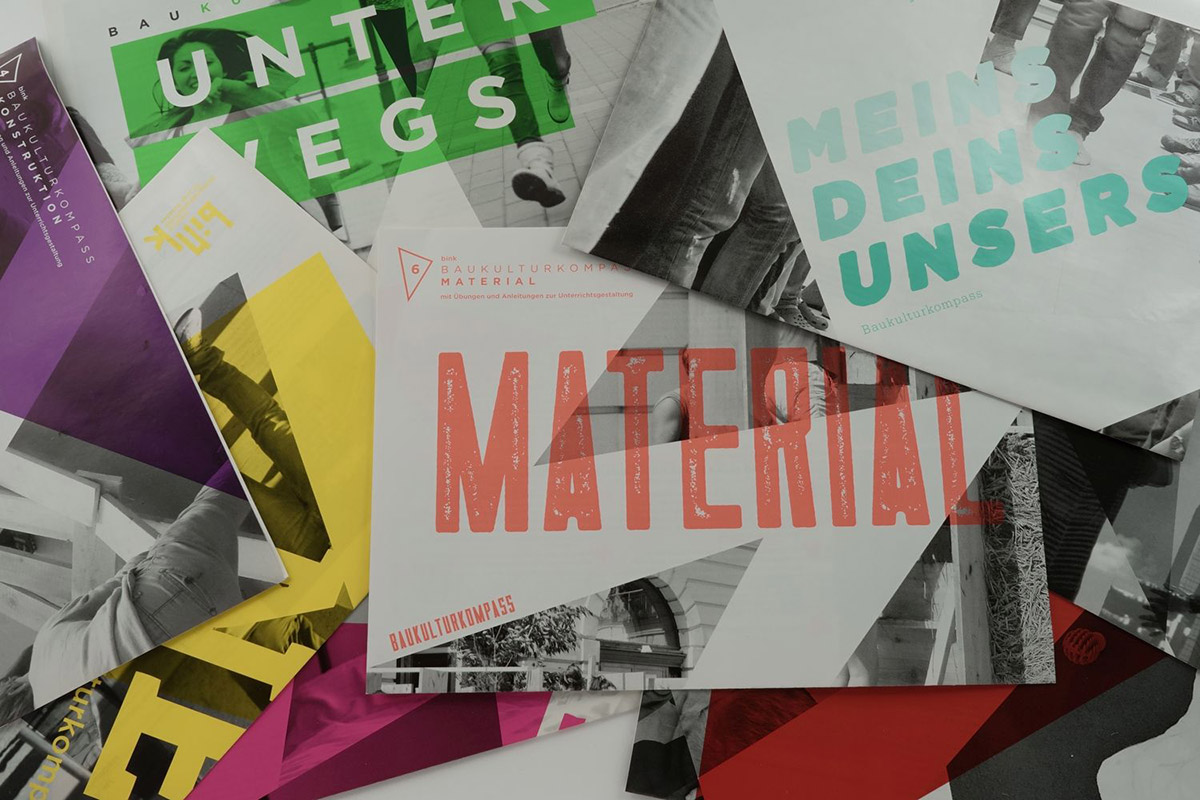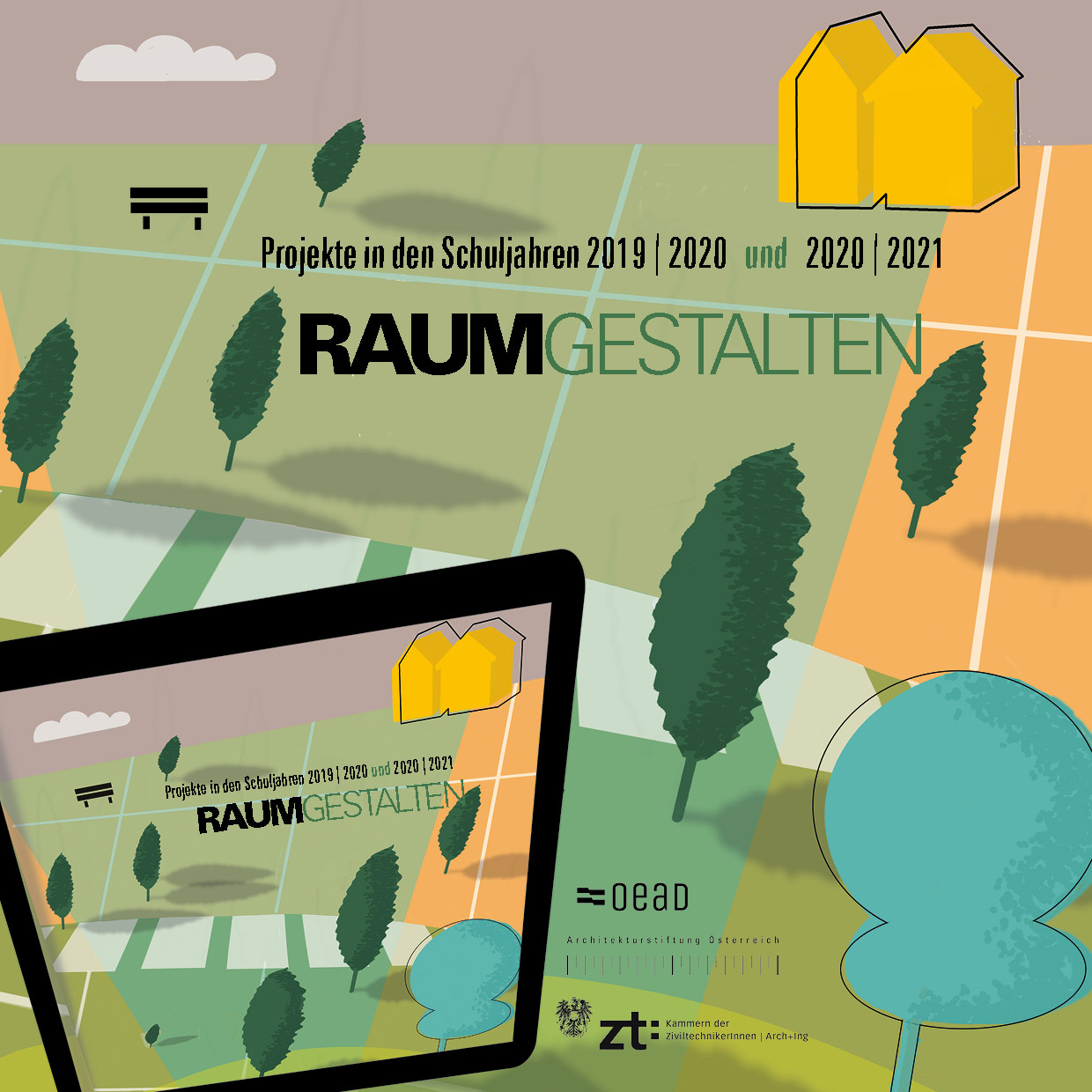22/023
Barbara Feller
Educator
Vienna

«What fascinates me about architecture and building culture in general is that it affects everyone.»
«What fascinates me about architecture and building culture in general is that it affects everyone.»
«What fascinates me about architecture and building culture in general is that it affects everyone.»
«What fascinates me about architecture and building culture in general is that it affects everyone.»
«What fascinates me about architecture and building culture in general is that it affects everyone.»
Please, introduce yourself and your project…
My name is Barbara Feller. I was born in Vienna, went to school and university here, and this city also plays an important role in my scientific work. From 1996 to 2021 I was the managing director of the Austrian Architecture Foundation and for more than 10 years I have been the chairwoman of bink Initiative Baukulturvermittlung für junge Menschen. In addition, I am passionate about editing publications in the field of architecture and building culture.
How did you find your way into the field of architecture? Why are you fascinated by your work/architecture in general?
My path to architecture was unusual: I had no contact with architecture at all during my school years. In my parents’ house, nature and sports were much more in focus. I decided to study history, philosophy and education because these were my favorite subjects at school. And to finance my studies I needed a job and after some detours I found a job as a secretary in an architectural office. That’s where my enthusiasm for the subject was born. I have then combined architecture and history in many ways in my professional life to date, for example in studies of Vienna, especially in the 20th and 21st centuries. And with my work in the field of built environment education for young people, I have built a bridge between pedagogy and architecture.
What are your experiences founding your own platform/project?
In addition to my main job as managing director of the Architekturstiftung Österreich, I worked and work on my own projects in a variety of constellations, sometimes alone, sometimes in teams with colleagues. On the one hand, I work on scientific studies in the field of architecture, which deal with both historical and current urban development in Vienna. Furthermore, as an editor and author, I am responsible for various publications in the context of architecture, and as chairwoman of the association bink Initiative Baukulturvermittlung für junge Menschen, I strive – together with committed people from all over Austria – to bring children and young people closer to the subject of architecture and building culture.
My projects have all somehow “come up”: I have never made a grand plan. It was rather the case that one project led to the next. It was and is always important to me to work together with committed colleagues – I enjoy it very much when different knowledge and skills complement each other well.
What does your desk/working space/office look like at the moment?
There is always a lot of paper on my desk and all around: books, notes on large and small pieces of paper. It always looks pretty messy, but for the most part I find what I need!
What is the essence of architecture for you personally?
What fascinates me about architecture and building culture in general is that it affects everyone, because everyone spends almost their entire life in a designed environment. And that’s why I think it’s important for everyone to have a certain level of competence in this field in order to be able to make a qualified contribution to planning and design processes.
What needs to change in the field of architecture according to you? How do you imagine the future?
I think it is important to focus much more on already existing buildings in the future. Not in the sense of misunderstood building preservation, but in the sense of appreciating that a great number of buildings and infrastructure has already been built and a great deal of land and energy was used for that. Of course, building should continue in the future, with as high a quality as possible, but it is necessary to deal more sensitively with what already exists: this applies to buildings, but also to open spaces, which must be protected, preserved and expanded.
Whom would you call your mentor?
Jan Tabor: a journalist and architectural thinker, he gave me a lot of confidence when I was young and encouraged me to do those things that bring me joy and fullfillment.
How do you communicate/present Architecture?
I love to walk with people through different city regions and tell them something about the history and design. And it is not only me telling them something but about starting a dialogue. And of course, books and texts are also among my “mediation tools”.
If there were one skill you could recommend to a young architect to study in depth at architecture school: what would it be and why?
I find the ability to exchange ideas and engage in dialog very important – both with clients and with users and neighbors. Enjoying and understanding communication is therefore important. Equally important to me is a good knowledge of social developments and, of course, a feeling for good design.
What essential actions do we need to take as architects now regarding a more sustainable future for everyone?
Sustainability is not “only” about looking at the individual building. It is also very important to focus on the context. A passive house on a greenfield site with two to three cars, long distances considering the daily life and the necessary infrastructure is much less favorable in the overall energy balance than, for example, the renovation of an old object in the center of a village or dense living in the city. That’s why I think it’s essential to take on a holistic perspective of building, living and working.
What person/collective or project do we need to look into right now?
I find the projects of the French team Lacaton Vassal very exciting: with their transformations, for example, they create an upgrading of the existing buildings, combining this with ambitious design and social balance.
Project 1
Landuse right done
Under the motto “Landuse right done”, the 2021 Baukulturgemeinde Award focused for the first time on the innovative use of land. The award was given to communities that handle their land with care and strengthen life in their midst with intelligent projects. Many of the initiatives in the special award prove that there is also a great deal of commitment outside the municipalities.
The award is given for a long-term process that leads to sustainable places worth living in –through active strengthening of town centers, high-quality construction in existing buildings, climate-conscious unsealing and greening, good citizen participation, progressive mobility concepts, consistent use of spatial planning instruments, quality architecture through design advisory boards and a competition culture.
5 reasons why it's worth being smart with land:
Such a beautiful place!
A compact, lively town with creative and contemporary forms of living, working, commerce and leisure is beautiful and has charm. Around the town there is an intact cultural landscape that is not cut up by shopping centers and through which people like to move. This is not only nice for tourism, but especially for the people who live there!
Good climate in the community
Less land use outside the village center means less sealing. Less sealing means less heat that builds up over concrete and asphalt surfaces. This makes for a more pleasant, cooler everyday life in the summer. And those who strengthen town centers reduce the volume of traffic and inspire ideas for alternative mobility concepts. That’s a big contribution to climate protection!
We stick together!
In a compact, lively town, people meet – while shopping in the store, on the way to work or to the doctor’s office, while resting on a bench in the main square. That’s where you get to chat and meet new people. This is how the social cement in the community is created, which is enormously important for a strong coexistence.
Don't go away – buy in town!
Local businesses and service providers thrive on a lively town. If there is enough foot traffic, new businesses will settle here, which in turn will bring more foot traffic. Small stores with creative or niche products, or young businesses can then also survive. The town center itself becomes a shopping center.
Saving money
Last but not least, it is important to emphasize: A compact village center saves costs and is easy on the budget! The community has to spend less money on cost-intensive infrastructure outside the village. The money saved can be used for other heart projects – such as the redesign of the main square, the expansion of the kindergarten, the promotion of start-ups.
Project 2
RaumGestalten – Learning to see. Being able to speak. Participate in decision-making.
The aim of the project is to prepare people for their responsibility towards the designed environment and to show that space has an effect and makes a difference for human beings. Therefore, appropriate training should make people able to see, speak and thus make decisions and enable them to participate in society in a responsible manner. After all, everyone lives and moves in designed spaces, and therefore a confident and conscious approach to this environment is an essential part of general education. Even though architecture has the most immediate and inescapable impact on daily life of all art forms, few people are consciously aware of their environment. And just as few are aware that the design of living space contributes significantly to the well-being of the individual, that space precisely has an effect and, moreover, is a central component of the respective cultural identity. Therefore, the recognition of architecture has to be learned!

Teaching architecture in school should not be the uncritical adoption of standardized aesthetic concepts, but the ability to perceive architecture in its diversity. Therefore, the focus is not on teaching architecture, not on training “little architects”, but primarily on awakening an understanding of space and demonstrating how the built environment can be shaped (and thus influenced). The understanding of architecture and building culture is thus strengthened on a broad basis. The aim is for citizens to demand more from houses and squares than mere fulfillment of their purpose, and in turn to spur architects on to better projects.
Children and young people learn with great enthusiasm that architecture is more than just building houses, architecture is not so simple but contains an infinite variety, that architecture concerns us all and that architecture is fun.
The long-term goal is for everyone to encounter aspects of architecture and environmental design at least once during their education. The aim is to have several encounters – each appropriate to the age of the student. One way for a better future could be an Academy for Architectural Education, where all subject-specific knowledge (training and further education for teachers, architects and mediators, teaching materials, international experiences and findings, etc.) is bundled and made available to the public. Projects that have already been developed will be collected there, and new models will be developed, tested and evaluated.
Find the current brochure of the project series RaumGestalten here: www.architekturstiftung.at/projektreihe-raumgestalten
Website: www.bink.at; www.architekturstiftung.at; www.landluft.at, www.baukulturpolitik.at, www.oead.at
Interview: kntxtr, ah + kb, 10/2022
